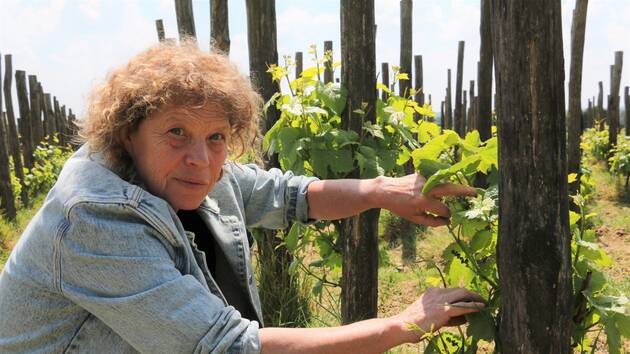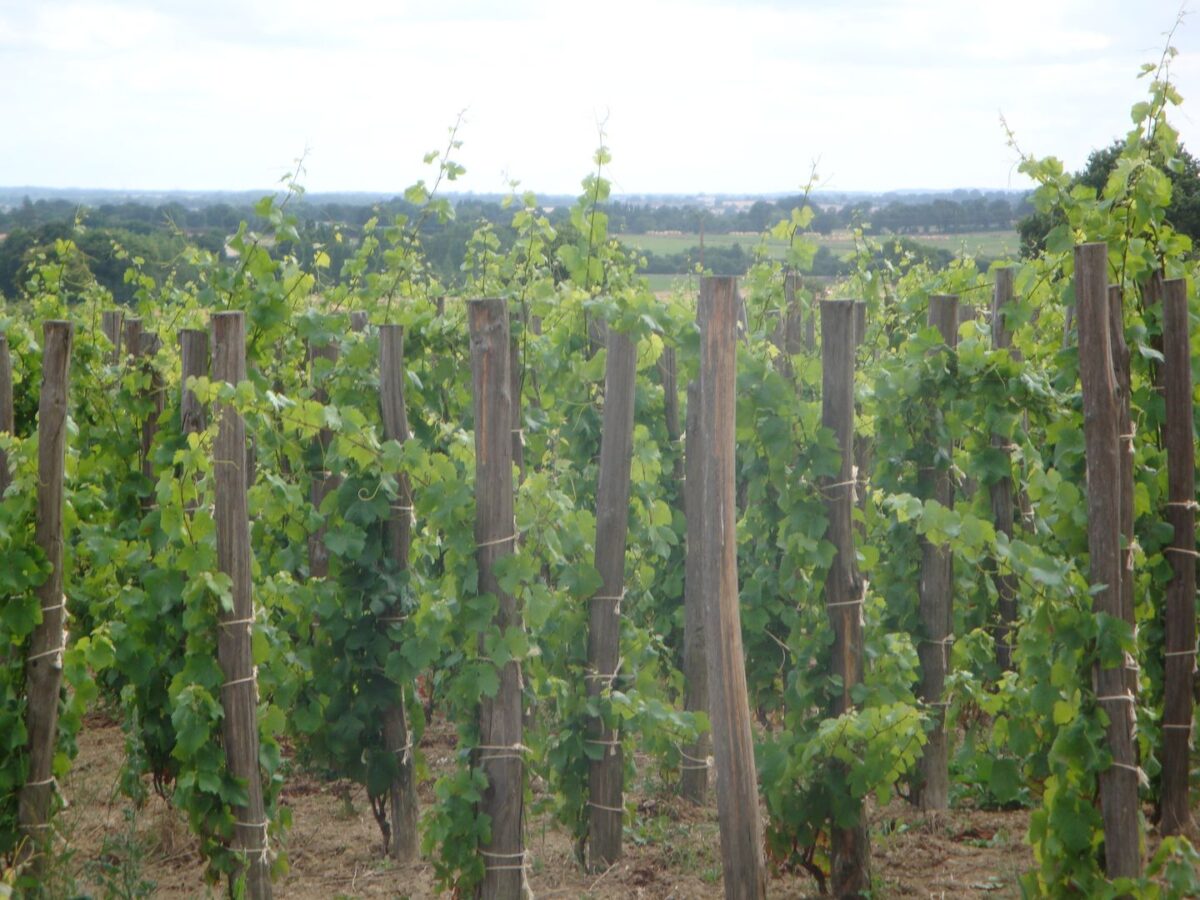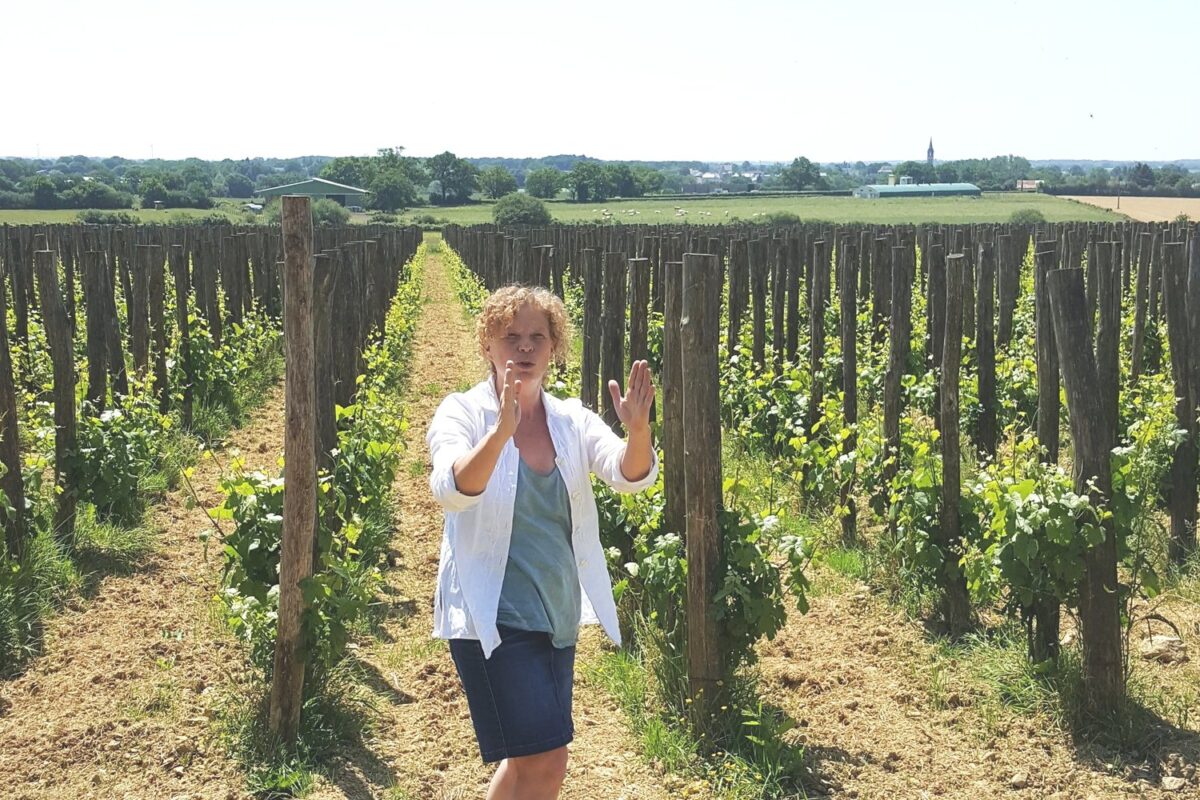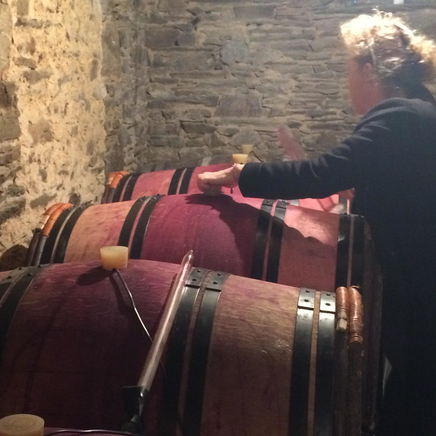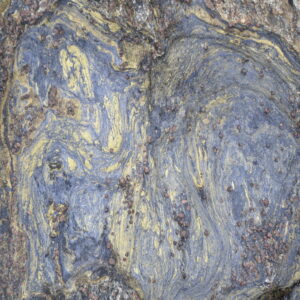“Today, I am in the same state of mind as the one that has always animated me. That is to say, placing respect for humans but also for natural resources at the heart of my activity.” —Xavière Hardy
Xavière Hardy (Les Terres Bleues) is the only wine grower in her village of La Chapelle-Glain. It puts her well outside the nearest Loire AOC of Côteaux d’Ancenis in every sense.
After discovering that natural wines were those that challenged and captivated her, she gave up a long career specialized in environmental engineering and plunged into the unknown: In 2013, she began planting 1.5 hectares of uncharted ground, tethered only to the idea of farming pinot gris, pinot noir, and grolleau noir biodynamically and making sulfur-free natural wines that express her connection to the land and the environment. The results are defined by freshness and energy, drawing a direct line to the blue schist and cool oceanic clime of her chosen terroir.
In her deliberate explorations of this uncharted terroir and through her unfettered approach in the cellar, Xavière has uncovered an entirely new character for these varieties.
Region
Xavière was drawn to a specific piece of land, not a region or an ideal. So it is this one place that is relevant: a small plot that had been managed organically for more than 20 years. The location was no accident. “In a context of global warming, vines and winegrowers must adapt,” she reasons. “Planting farther north was of interest in response to these changes, so the wines keep their characteristics.”
But planting vines in La Chapelle-Glain was officially forbidden. With the help of Jacques Carroget of Domaine de la Paonnerie, something of an ambassador for natural wines in the region, Xavière put pressure on local institutions. They ended up giving in. For her, a true terroir study was “an essential prerequisite to ensure the relevance of this project and to choose grape varieties perfectly suited to the local context,” she says, with the analytical precision of her previous profession.
Winemaker
“I had always been interested in vines and wine, but it was when I discovered ‘natural’ wines that I really challenged and captivated,” Xavière says. “‘Natural’ wines have generated, for me, the most beautiful emotions during tastings.” So much so, that in 2017, she left a long career in environmental engineering and gave herself over entirely to their creation and care. “I started from zero. No vines, no cellar, no equipment, no stock,” she points out. She sought the advice of organic and biodynamic winegrowers including Carroget and Guy Bossard of Domaine de l’Ecu. Then she struck out on her own.
“I have a very strong link to the environment, to water, the earth, nature, so it was something that attracted me. I would never have thought of doing that in La Chapelle-Glain. But I had a soil study carried out by the viticultural soil unit and I realized that I had a plot on which it was quite possible to plant vines!,” she explains.
The land itself and the context in which she lives – near her son and daughter, who raise rare Solognote lambs and Longuet pigs for meat, Lacaune sheep for cheese, and work with heritage grains for sourdough breads – “in complete autonomy” dictated the parameters of her micro-estate. In working to honor her family’s products by making wines from the same terroir and values, she is closing a startlingly virtuous circle.
Vineyards and Farming
Les Terres Bleues’ sky-blue Anjou schist is mirrored in the azure-colored stone that makes up a wall of Xavière’s house. Such terroir has a magnetism of its own. But it is not a soil type for just any grape variety.
Every vine at the estate was a deliberate choice, in precise alignment with the schist and climate. No holdovers or accidents here. “I created my estate to be able to initiate vine management on new ‘land’ free from any chemical intervention,” she notes. This raises the beautiful question of what is possible when a grower starts from a clean slate, motivated by land and love but informed by scientific understanding and profound appreciation for the interactions of human, crop, and climate.
Her half-hectares each of massal selected pinot gris, pinot noir, and grolleau noir on carefully selected rootstock are trained quite uncommonly on chestnut stakes in a style Xavière feels respects the original trellising environment of vines: trees.
It almost goes without saying that Xavière sought and gained ECOCERT organic certification from the outset, gaining DEMETER biodynamic certification in 2019. She follows the lunar calendar, works with preps and herbal teas of nettles, comfrey, horsetail, oak bark, willow, and other plants to minimize reliance on copper. “The objective,” she notes, “is to allow the vine to strengthen its own resistance to disease and to improve exchanges between soil microorganisms and its root system.” The ecosystem is as important as the vine itself, in her view. She actively preserves the hedges that surround her plot, creating a multi-species refuge, allowing water to seep into the soil and limiting the risks and effects of drought, protecting the soil from erosion, and generating humus.
Apart from harvest and vine tying, Xavière does everything herself. She works the soils in the spring, but otherwise leaves a cover crop of what she calls “weeds” that grow spontaneously in the vineyard. Her belief is that “if these weeds are present, it is because the soil needs precisely these species. I could never establish a more relevant and adapted vegetation cover.” She does not manage the canopy, allowing it to develop in accord with the grapes’ need for sun protection.
In the Cellar
Working on a very small scale and “without any oenological input,” Xavière’s objective is to create wines that are direct expressions of the land and her own determined character. Spontaneous fermentation in open-topped vats is followed by aging in mixed-age used barrels and vats. The wines are unfined, unfiltered, and receive zero sulfur additions. Bottling is typically done in the spring after harvest. Of critical importance to Xavière is that she has free reign to adapt her vinifications to the characteristics of each vintage.
“Today, I am in the same state of mind as the one that has always animated me,” Xavière reflects. “That is to say, placing respect for humans but also for natural resources at the heart of my activity.”
